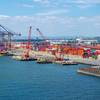Recent spills in the Gulf of Mexico have demonstrated how tried and true oil spill recovery has combined with chemical dispersant technology to combat oil spills.
On October 1, 1998, when a slick tracked to a crude oil pipeline leak off Louisiana's Gulf Coast was detected, the ready forces of oil responders were immediately activated. Along with a small armada of oil spill response vessels (OSRVs) hurrying to the site of the spill traced to a Chevron pipeline, a plane loaded with Corexit 9527 dispersant was deployed to shrink the growing oil slick estimated to be 37 kilometers long. By day two of the spill, dispersant operations had successfully shrunk the slick enabling OSRVs to contain the oil and finish the cleanup job.
Escalating costs for cleaning up spills worldwide have helped to change attitudes by government and industry towards the use of dispersants. In an effort to gauge public sentiment over proposed changes in OPA 90 mechanical equipment requirements or "caps," the USCG held a series of public meetings last summer. As a result of those meetings, the USCG has gone on record advising any regulation review of mechanical equipment caps should include chemical dispersants, in-situ burning and oil tracking technologies. The USCG agrees dispersants should play an important role in response planning requirements. In addition, new legislation before Congress, such as the proposed Oil Spill Dispersant Aircraft Act of 1998, if passed, would help ease the high cost of utilizing chemical dispersants by allowing the government to sell surplus planes and parts to private companies applying dispersants.
While government and industry have come to the realization chemical dispersants or in-situ burning can be combined with mechanical recovery to shorten cleanup time and reduce the cost of spills, these methods do have some shortcomings. Most experts agree it costs about $25 per gallon of Corexit to disperse ten gallons of oil. Factoring in the cost of aircraft, plus the use of additional planes as spotters, a dispersant effort can easily cost about $500,000. Depending on the size of a spill, the costs for using dispersants can add up very quickly.
To be most effective, dispersants should be utilized within the first 24 hours of a spill, when most of the oil is still sitting on top of the water. In addition, dispersant and in-situ burning methods are weather-dependent. Low visibility or foul weather can inhibit their use. Another concern, particularly with in-situ burning, is blowing smoke from burning efforts onshore to neighboring towns or cities. Some new in-situ technologies such as fireproof boom have not proven completely successful in their application and have demonstrated a need for more improvements with this new equipment.
When spill dollar is compared to spill dollar on how major oil spills are cleaned up, most experts agree in order to bring down costs, mechanical recovery systems must become more efficient and clean up efforts must combine a variety of methods to shorten the cleanup process. There is a concern, however, the move towards more sophisticated technology on the regulatory front is not being supported by the industry on the financial front. The industry sometimes has difficulty seeing the "potential" cost saving benefits of new technology because their vision is clouded by current "real" costs.
This industry dilemma has been somewhat exacerbated by regulations who push forward with new and more stringent regulations. Examples of these include dispersant requirements, hazardous material regulations and non tank vessel requirements. Yet, these same regulators are hesitant to enforce the rules when marginal industry players stand behind "paper" compliance.
As history has shown, it may take another major spill to obtain a balance between technology advances and regulatory compliance. We can only hope the regulators and industry reach some common ground before such an event. It is this type of coordination that will best ensure we are prepared to best respond.
Sponsored Content
Lower carbon intensity fuels to support your operations

Subscribe for
Maritime Reporter E-News
Maritime Reporter E-News is the maritime industry's largest circulation and most authoritative ENews Service, delivered to your Email five times per week










